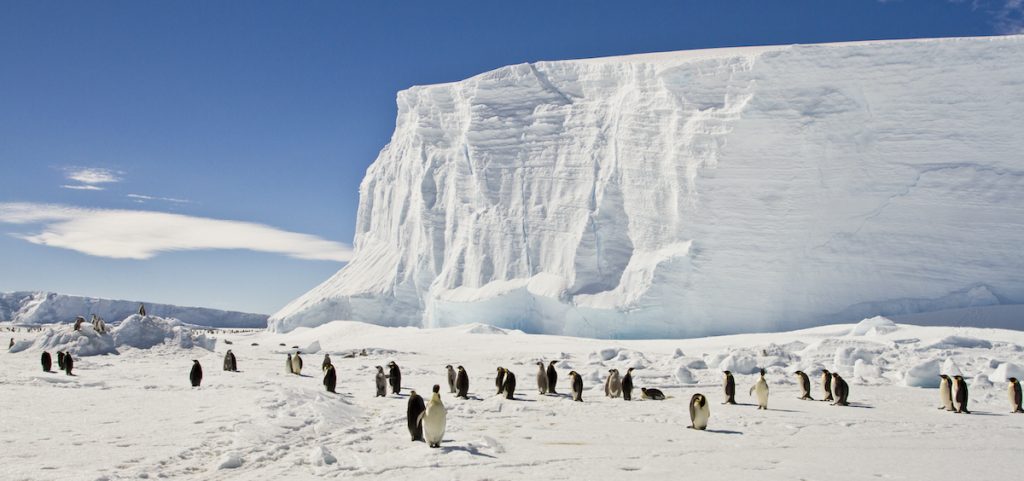An Ohio University meteorology professor warns melting Antarctic ice threatens penguins with extinction
By: Gabriel Scotto
Posted on:
ATHENS, Ohio (WOUB) – Melting Antarctic ice could contribute to rising sea levels and doom Antarctica’s penguin population to extinction by the end of the century.
2023 saw the lowest maximum extent of Antarctic sea ice since scientists began keeping track using satellite data in 1979.
“Sea ice by itself when it melts won’t raise sea levels because it’s already floating on the water,” explained Ohio University meteorology professor Ryan Fogt during a presentation on campus Wednesday, using a cup of ice water to illustrate his point.
However, this is not the case for melting ice from the ice sheets that cover the surface of Antarctica.
“It’s like adding more and more ice to my cup,” continued Fogt as he placed additional ice cubes into the cup as a demonstration.
Scientists use satellite imagery to measure the extent of sea ice. Antarctic sea ice is at its minimum extent in late February, before peaking around September and then declining. On its own, Antarctica is around one and a half times the size of the continental United States. At its maximum extent, the sea ice surrounding Antarctica is roughly equal in area to the continent itself.
“It’s a lot of ice,” said Fogt. “Not to mention that the ice on Antarctica is several miles thick. We’re looking at miles of ice.”

Antarctic ice melt threatens penguin population
The most immediate threat posed by melting Antarctic sea ice is to penguins. While penguins are aquatic birds, they breed and nest along the ice’s edge. Unlike adult penguins, which are covered in a thick layer of waterproof feathers that insulate them while swimming and trap air to retain warmth, penguin chicks are covered in soft downy feathers and are reliant on their parents’ warmth to survive.
“Those feathers are not warm enough to keep them alive,” explained Fogt. “And so they’re dependent on the ice being there to survive. They cannot swim in the ocean yet and so if that ice moves, they have to move with the ice and get to more ice or onto the ice sheets to survive.”
Rapidly melting sea ice resulted in over 9,000 penguin chicks dying last November in the Bellingshausen Sea region.
According to Fogt, 90% of penguin populations in Antarctica could be threatened to extinction or “quasi-extinction” in which their population dynamics are rendered unstable.
Melting ice threatens humans, too
While melting sea ice doesn’t pose a threat to humanity, the melting of Antarctica’s surface ice sheets could contribute to sea levels increasing by up to three feet by the year 2100. This would threaten billions of people living in coastal and low-lying areas such as Florida and the Netherlands.
Rather than being caused by increased atmospheric temperatures as in Greenland, the melting of ice sheets in Antarctica is caused by rising ocean temperatures.
“Warm water is creeping up underneath these ice shelves,” said Fogt. “These ice shelves are kind of like the barrier or the wall, stopping the large amount of ice on the continent from flowing out to sea. So as that moves faster … it moves more and more off. It causes sea level to rise.”
Fogt concluded his presentation by warning his audience that while Antarctica’s warming climate is not on the minds of those living in Ohio, that doesn’t mean it won’t affect Ohioans.
“What happens in Antarctica doesn’t stay there,” he said. “So we can think of it as a far-off, remote place that you may not get to someday, but just because it’s far off in your mind and far off in distance doesn’t mean that it won’t impact things closer to home.”

